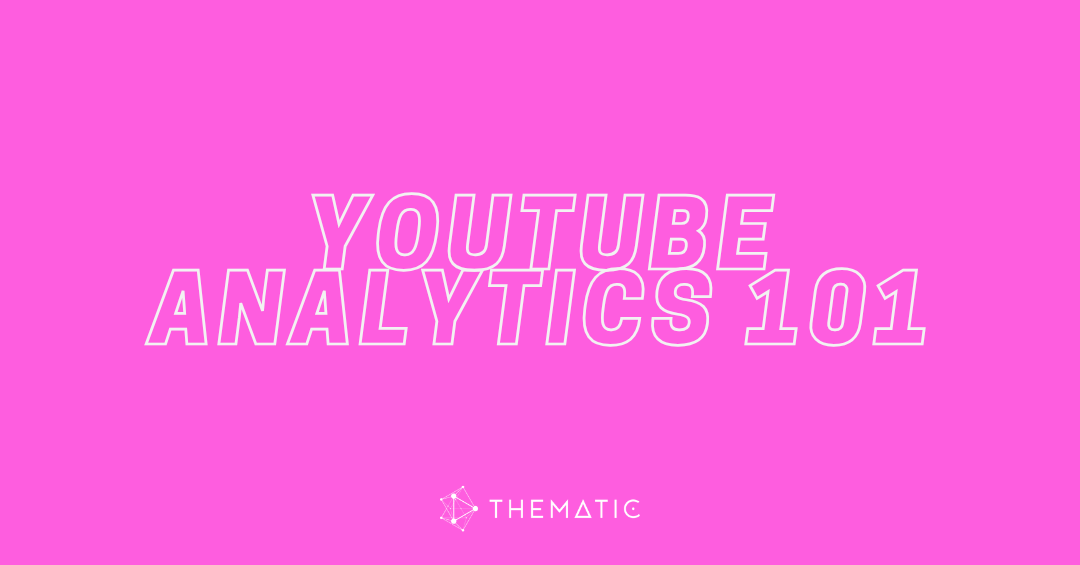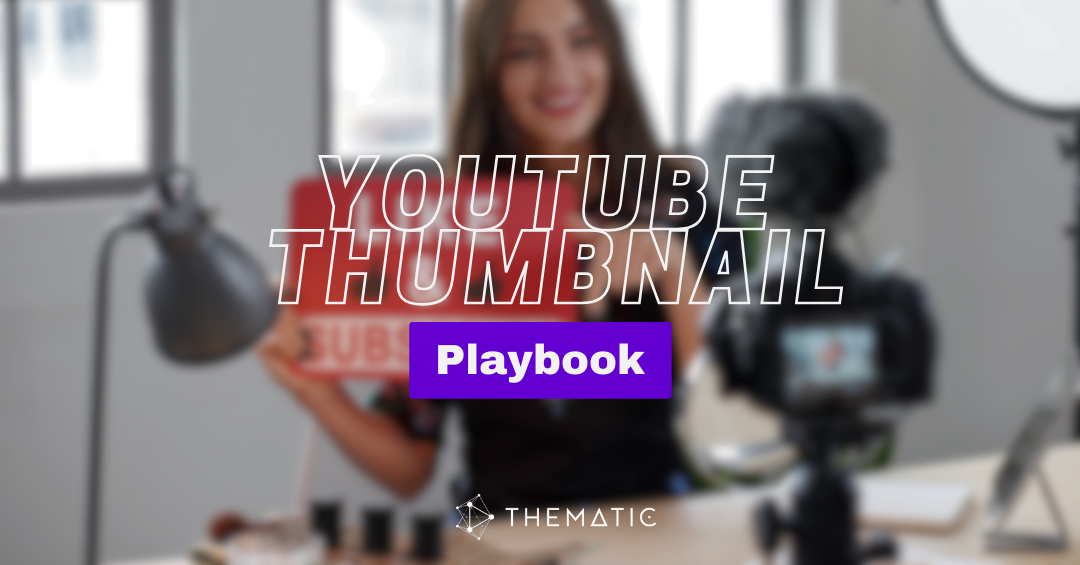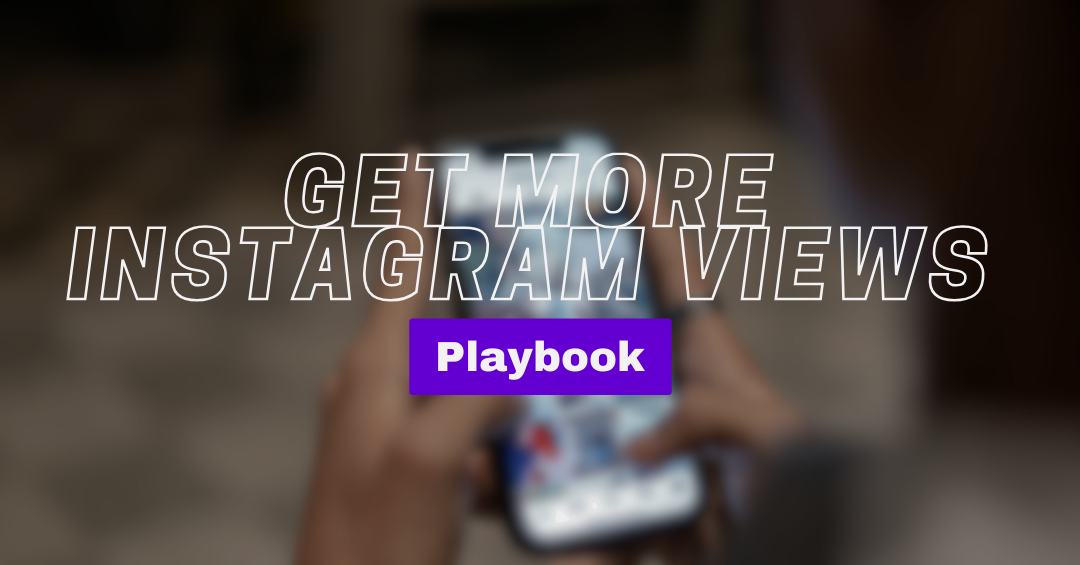Only have a few minutes? Here’s our TLDR:
How do I optimize my YouTube videos for SEO?
To optimize YouTube videos, focus on these 7 core elements:
- Keyword-rich titles (place main keyword first)
- Detailed descriptions (150+ words with keywords)
- Custom thumbnails (high-contrast, text overlay)
- Strategic tags (5-15 relevant keywords)
- Engagement signals (likes, comments, shares)
- Watch time optimization (hooks, pacing, retention)
- Copyright-safe music (enhances engagement without strikes)
Videos that master these elements rank higher in search, appear in suggested feeds, and accumulate views faster than unoptimized content 💪
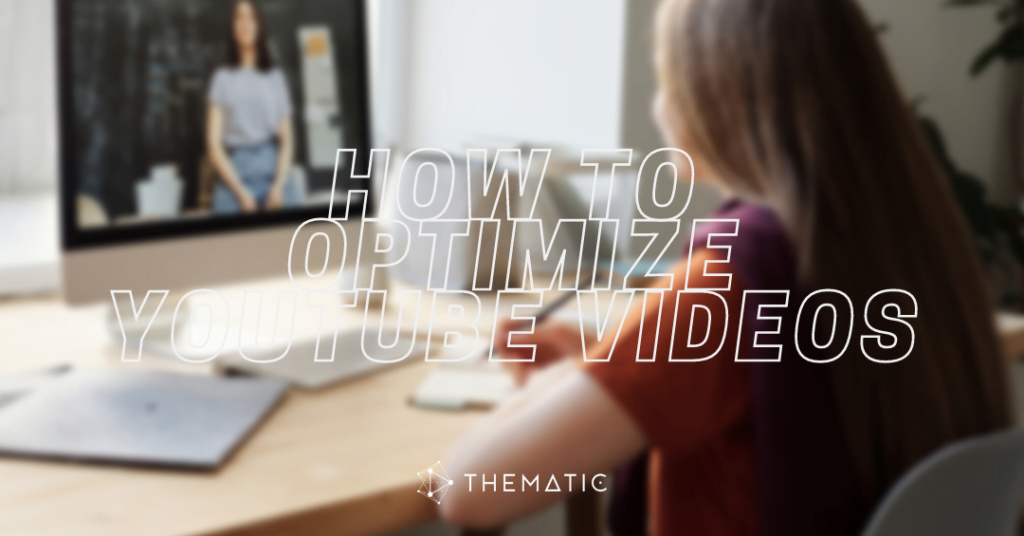
Introduction: Why YouTube Optimization Is Your Growth Multiplier
Every 60 seconds, creators upload over 500 hours of video to YouTube. That’s 30,000 hours of new content every single hour competing for viewer attention.
Without optimization, even exceptional videos get buried on page 10 of search results where less than 1% of viewers ever look.
👉 The reality: YouTube’s algorithm in 2025 prioritizes videos that signal quality through:
- High click-through rates (CTR) from search and browse
- Strong audience retention (average view duration)
- Engagement signals (likes, comments, shares, saves)
- Session watch time (keeping viewers on YouTube)
- Consistent upload patterns and channel authority
When you optimize YouTube videos properly, you’re not gaming the system – you’re communicating clearly with both YouTube’s algorithm and your target audience about what makes your content valuable.
What Proper Optimization Actually Delivers
✅ 3-5x more impressions in YouTube search and suggested feeds
✅ Higher subscriber conversion rates (viewers find exactly what they searched for)
✅ Longer watch sessions (better recommendations lead to more views)
✅ Faster channel growth (algorithm amplifies performing content)
✅ Monetization eligibility (meeting watch time requirements faster)
👉 Real Example: A tech tutorial channel optimized 10 older videos with updated titles, improved thumbnails, and keyword-rich descriptions. Within 30 days, those videos saw a 287% increase in impressions and 156% increase in click-through rate, generating an additional 50,000 views without creating any new content.
This guide walks you through the complete YouTube SEO process – from keyword research before you even press record, to ongoing optimization strategies that compound over time.
Table of Contents
📋 Core Optimization Steps
- Step 1: Keyword Research Before You Film
- Step 2: Craft Click-Worthy Titles That Rank
- Step 3: Write SEO-Optimized Descriptions
- Step 4: Master YouTube Tags
- Step 5: Design Thumbnails That Demand Clicks
- Step 6: Optimize Your First 30 Seconds
- Step 7: Use Copyright-Free Music Strategically
- Step 8: Maximize Engagement Signals
- Step 9: Leverage Playlists for Session Time
- Step 10: Analyze, Iterate, Optimize
🧠 Advanced YouTube SEO Strategies
📚 Quick Reference
Step 1: Keyword Research Before You Film
🫠 Most creators make this mistake: They create content first, then try to optimize it afterward. This backwards approach limits your growth potential.
✅ The better approach: Research keywords before filming to ensure demand exists for your topic.
How to Find High-Potential Keywords:
A. Use YouTube’s Auto-Suggest Feature
- Type your topic into YouTube search (don’t press enter)
- Note the suggested searches (these are real queries people type)
- Look for specific, descriptive phrases (long-tail keywords)
👉 Example: Instead of targeting “video editing tips” (too broad), target “video editing tips for beginners premiere pro 2025” (specific, winnable).
B. Analyze Competitor Video Performance
- Search your target keyword
- Filter results by upload date (last 6 months)
- Look for videos with strong views relative to subscriber count
- Note their title structures, thumbnail styles, and description patterns
What to look for:
- Small channels (under 50K subs) ranking in top 10 = keyword is winnable
- Videos with views exceeding 50% of channel subscriber count = high engagement topic
- Common patterns in top-ranking titles = successful formula to emulate
C. Use Free SEO Tools
- TubeBuddy: Shows search volume and competition scores
- VidIQ: Reveals trending keywords in your niche
- Google Trends (YouTube Search): Confirms rising or declining interest
- YouTube Analytics: Check your existing traffic sources under “YouTube search” to see what’s already working
D. Evaluate Keyword Opportunity
🍪 The Sweet Spot for New Channels:
- Search Volume: 1,000-10,000 monthly searches
- Competition: Low to Medium
- Commercial Intent: High (if monetization is your goal)
Quick Evaluation Method: Search your keyword on YouTube. If the top results include:
- ❌ Videos from channels with 500K+ subscribers = too competitive
- ✅ Mix of channel sizes, including under 100K subs = good opportunity
- ✅ Older videos (2+ years) still ranking = underserved topic, ready for fresh content
✅ Pro Tip: Target keywords with 1,000-10,000 monthly searches when starting. These have enough demand to drive views but aren’t so competitive that you can’t rank.
🎯 Action Item: Create a keyword research spreadsheet with columns for: Primary Keyword, Search Volume, Competition Level, and Current Top 3 Video Titles.
Step 2: Craft Click-Worthy Titles That Rank
Your title serves two masters: YouTube’s algorithm (SEO) and human viewers (CTR).
The Perfect Title Formula for 2025:
[Primary Keyword] + [Benefit/Hook] + [Qualifier]
Examples:
- ✅ How to Edit Videos Faster in Premiere Pro (Save 5+ Hours Weekly)
- ✅ iPhone 16 Pro Review: 3 Features That Changed My Mind [2025]
- ✅ Beginner Guitar Tutorial – Play Your First Song in 10 Minutes
Title Optimization Rules:
1. Front-Load Your Primary Keyword
- Put your main search term in the first 5 words
- YouTube weighs earlier words more heavily
- Mobile users see only the first 40-50 characters
❌ Bad: “In this video I’ll show you how to start a podcast”
👍 Good: “How to Start a Podcast in 2025 (Complete Beginner Guide)”
2. Include Power Words That Boost CTR
- Numbers: “5 Steps,” “3 Mistakes,” “10-Minute Guide”
- Time indicators: “2025,” “Latest,” “New Method”
- Benefit phrases: “Without Equipment,” “For Free,” “Step-by-Step”
- Emotional triggers: “Amazing,” “Shocking,” “Essential”
3. Keep Titles Between 50-70 Characters
- Longer titles get truncated in search results
- Mobile displays ~40 characters before the “…”
- Desktop shows ~70 characters
4. Test Title Variations for Existing Videos
If a video has good impressions but low CTR (<4%), try updating the title. Give it 2 weeks to gather data, then compare performance.
5. Match Search Intent
- Informational: “What is,” “How to,” “Why does”
- Tutorial: “Step-by-step,” “Complete guide,” “For beginners”
- Comparison: “vs,” “Best,” “Top,” “Review”
- Entertainment: “[Specific Experience],” “My [Story],” “Watch me”
✅ Pro Tip: Browse your niche’s top-performing videos and notice title patterns. Successful creators in your space have already tested what works with your target audience.
🎯 Action Item: Write 3 title variations for your next video before filming. Test them with your target audience (Discord, Reddit, friends) to see which generates the most interest.
Step 3: Write SEO-Optimized Descriptions (The Right Way)
Video descriptions are YouTube’s second-most-important ranking factor after titles. Yet most creators waste this opportunity with vague, generic text.
Anatomy of a High-Performing Description:
First 150 Characters (The Hook)
This appears “above the fold” in search results and video pages. Make it count.
Formula: [1-2 sentence summary that includes your primary keyword + clear benefit statement]
Example: “Learn how to optimize YouTube videos for SEO with this complete 2025 guide. I’ll show you exactly how to rank higher, get more views, and grow your channel using proven strategies that actually work.”
Next 150-300 Words (The Content Summary)
- Expand on what viewers will learn
- Include secondary keywords naturally (no stuffing)
- Add timestamps for long videos (boosts retention)
- Mention key tools, resources, or concepts covered
Example Timestamps Format:
📌 VIDEO CHAPTERS:
0:00 – Introduction to YouTube SEO
1:45 – Keyword Research Before You Film
5:20 – How to Write Click-Worthy Titles
9:10 – Optimize Your Video Description
12:35 – Custom Thumbnail Best PracticesFinal Section (Links & CTA)
- Link to related videos or playlists
- Include social media profiles
- Add affiliate links or product mentions
- End with a channel description paragraph (helps with channel page SEO)
Standard Channel Description Template:
🎬 ABOUT THIS CHANNEL:
[Your Name/Brand] creates weekly videos about [your niche] for [target audience].
New uploads every [day of week]! Subscribe for [specific benefit].Description SEO Best Practices:
1. Use Keywords Naturally
- Include your primary keyword 2-3 times (title, first paragraph, and naturally once more)
- Add 3-5 secondary/related keywords throughout
- Don’t sacrifice readability for keyword density
2. Add Hashtags (But Don’t Overdo It)
- Use 2-3 relevant hashtags maximum
- First hashtag becomes clickable above title
- More than 3 hashtags and YouTube ignores them all
👉 Example: #YouTubeSEO #VideoMarketing #ContentCreatorTips
3. Link to Related Content
Internal links to your other videos/playlists boost session time (a key ranking factor).
4. Update Descriptions on Top-Performing Videos
If an older video ranks well but has a basic description, expand it with current information and links to newer related content.
✅ Pro Tip: Use YouTube’s “description templates” feature (YouTube Studio > Settings > Upload Defaults) to auto-fill recurring elements like social links, music credits, and standard disclaimers.
🎯 Action Item: Create a description template document with your standard sections pre-written. Customize only the video-specific content for each upload.
Step 4: Master YouTube Tags (They Still Matter)
🦄 Common myth: “Tags don’t matter anymore for YouTube SEO.”
✔️ Reality: Tags matter less than they used to, but they still help YouTube understand your content’s context, especially for new channels with limited data.
How to Choose Effective Tags:
Tag Strategy (Use All 500 Characters):
Tier 1: Exact Match (2-3 tags) Your primary keyword exactly as users search it.
- Example: “how to optimize youtube videos”
Tier 2: Close Variations (3-5 tags) Slight variations of your primary keyword.
- “optimize youtube videos for seo”
- “youtube video optimization”
- “how to optimize videos on youtube”
Tier 3: Related Topics (5-8 tags) Broader but relevant terms.
- “youtube seo tips”
- “video marketing”
- “grow youtube channel”
- “youtube algorithm 2025”
Tier 4: Branded Tags (2-3 tags) Your channel name and series name (if applicable).
- “thematic”
- “creator toolkit”
Tag Best Practices:
- Start Specific, Then Go Broad Specific tags compete less and help YouTube categorize your content precisely.
- Check Competitor Tags Use TubeBuddy or VidIQ to see what tags top-ranking videos use for your keyword.
- Include Common Misspellings If your keyword is often misspelled, include that variation.
- Use Multi-Word Tags “video editing premiere pro” is better than separate tags “video,” “editing,” “premiere,” “pro”
- Avoid Irrelevant Tags Misleading tags may trigger YouTube’s spam filters and hurt your rankings.
✅ Pro Tip: Save your best-performing tags in a spreadsheet by content category. Reuse proven tag combinations for similar videos.
🎯 Action Item: Analyze your 3 best-performing videos in YouTube Analytics. Under “Reach” > “Traffic Source: YouTube search,” see which search terms drive views. Use these as tags for related future videos.
Step 5: Design Thumbnails That Demand Clicks
😶🌫️ Harsh truth: Your thumbnail is more important than your title for most viewers. YouTube reports that 90% of the best-performing videos have custom thumbnails.
A weak thumbnail can kill a great video’s performance, even with perfect SEO.
The Thumbnail Design Framework:
Rule 1: High Contrast & Bold Colors
- Use complementary colors (blue/orange, yellow/purple)
- Avoid washed-out or muddy tones
- Test thumbnail visibility at small sizes (search results are tiny)
Rule 2: Faces Work (When Done Right)
- Close-up facial expressions showing emotion (surprise, joy, shock)
- Make clear eye contact with the camera
- Avoid generic smiling portrait shots (too common, doesn’t stand out)
Rule 3: Text Overlay (3-5 Words Maximum)
- Complement your title, don’t repeat it
- Use huge, bold fonts (minimum 60pt font size)
- Ensure text is readable on mobile devices
- High contrast between text and background
👌 Good Text Examples:
- Title: “How to Edit Videos Faster” → Thumbnail: “SAVE 5 HOURS”
- Title: “iPhone 16 Pro Review” → Thumbnail: “WORTH IT?”
- Title: “Beginner Guitar Tutorial” → Thumbnail: “10 MINUTES”
Rule 4: Visual Clarity & Simplicity
- One focal point per thumbnail (face, product, or key visual)
- Remove background clutter
- Use depth of field to separate subject from background
Rule 5: Brand Consistency
- Develop a recognizable style (color scheme, font, layout)
- Viewers scrolling their feed recognize your thumbnails instantly
- Consistent branding builds trust and increases CTR over time
Thumbnail Testing Strategy:
A/B Test Your Thumbnails: YouTube Studio now allows thumbnail A/B testing. Use it.
How to Test:
- Upload 2-3 thumbnail variations
- Let YouTube split traffic between them (2-4 weeks)
- Review which thumbnail generates higher CTR
- Apply winning style to future videos
What to Test:
- With/without text overlay
- Different facial expressions
- Color schemes
- Close-up vs. wide shot
- Different text phrases
✅ Pro Tip: Download Thematic’s free YouTube thumbnail template (Photoshop PSD) for perfect dimensions every time (1280x720px, under 2MB).
🎯 Action Item: Review your last 10 videos’ CTR in YouTube Analytics. Update thumbnails on videos with impressions over 1,000 but CTR below your channel average.
Step 6: Optimize Your First 30 Seconds (Retention is King)
📈 YouTube’s biggest ranking signal in 2025: Average View Duration (AVD) and Audience Retention Rate.
Videos that keep viewers watching get recommended more. It’s that simple.
🤨 The problem: Most viewers decide whether to keep watching within 30 seconds. If your intro doesn’t hook them, they leave (and YouTube notices).
Hook Formulas That Work:
Pattern Interrupt Hook (0:00-0:03): Start with something unexpected to stop the scroll.
- Quick visual cuts
- Bold statement
- Interesting question
- Surprising fact
Value Promise (0:03-0:10): Tell viewers exactly what they’ll learn and when.
👉 Examples:
- “In the next 8 minutes, I’ll show you 5 ways to double your YouTube views using free tools.”
- “By the end of this video, you’ll know exactly how to optimize every video for maximum reach.”
Social Proof (0:10-0:15): Build credibility quickly.
- “This strategy helped me go from 500 to 50,000 subscribers in 6 months”
- “I’ve optimized over 1,000 videos for clients, and this is the exact system we use”
Skip the Fluff (0:15-0:30): Jump straight into content. Viewers hate:
- Long intro montages
- “Hey guys, welcome back” rambling
- Asking for likes/subscribes before delivering value
- Over-explaining what’s already in the title
✅ Pro Tip: Watch your retention graph in YouTube Analytics. If you see a sharp drop-off at specific timestamps, that’s where you’re losing viewers. Edit those sections to be tighter and more engaging.
Mid-Video Retention Strategies:
Pattern Breaks (Every 30-45 Seconds):
- Change camera angles
- Add B-roll footage
- Show on-screen graphics
- Change music tempo
- Ask engaging questions
Curiosity Loops: Reference something valuable coming later in the video.
- “I’ll show you my #1 secret for thumbnails in just a minute”
- “Stick around, the strategy that 10x’d my views is coming up at the 8-minute mark”
Progress Indicators: Help viewers know where they are.
- “Okay, that’s tip #3 done. Let’s move to tip #4…”
- “We’re halfway through the checklist. You’re doing great!”
🎯 Action Item: Record a standard cold open template (5-10 seconds) that hooks viewers immediately. Use variations of this intro across all videos for consistency.
Step 7: Use Copyright-Free Music Strategically
😏 Underrated SEO factor: Music directly impacts watch time, which directly impacts rankings.
How Music Improves YouTube SEO:
- Emotional Engagement: The right soundtrack triggers emotions that keep viewers watching longer. Research shows videos with music have 20-30% better retention rates than videos without.
- Professional Production Value: Music signals quality. Viewers subconsciously associate good soundtracks with trustworthy, valuable content, leading to more likes, shares, and positive engagement signals.
- Pacing & Energy: Music helps control your video’s rhythm. Upbeat tracks during action sequences, calm instrumentals during tutorials, dramatic builds before reveals (all guide viewer attention and prevent drop-off).
- Brand Recognition: Consistent music choices (intro/outro themes, signature sounds) make your content instantly recognizable, improving returning viewer rates.
The Copyright Problem:
Using unlicensed music = SEO killer ❌
- Copyright claims can mute your audio (destroying watch time)
- Claims redirect ad revenue away from your channel
- Strikes can lead to video removal or channel termination
- Demonetization limits your ability to scale
✅ Solution: Always use pre-cleared, copyright-free music from trusted platforms like Thematic.
Why Creators Trust Thematic for YouTube Music:
✅ Pre-Cleared for YouTube: Every track is licensed for use (zero copyright claims)
✅ Professional Quality: Real artists, trending sounds, not generic library music
✅ Advanced Filters: Search by mood, genre, tempo, video type, or aesthetic
✅ Free for Creators: Access high-quality music without subscriptions
✅ Engagement-Focused: Curated playlists designed to boost retention and watch time
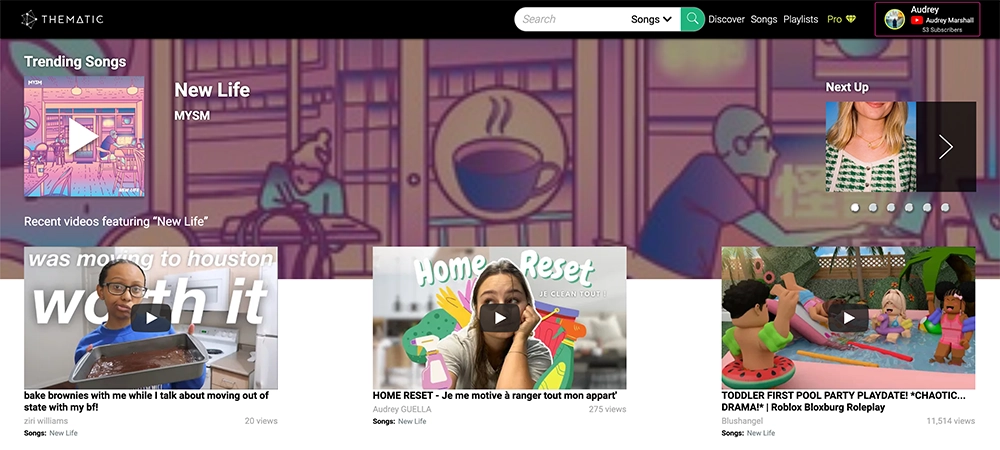
🎵 Get Started: Explore Thematic’s music library and find copyright-free tracks to make your videos more engaging and professional. Make every second count with the perfect soundtrack.
✅ Pro Tip: Match your music tempo to your video pacing. Fast-paced content (gaming, travel vlogs, challenges) = 120-140 BPM. Calm content (tutorials, meditation, study music) = 60-90 BPM.
🎯 Action Item: Build a music library of 10-15 tracks that fit your channel’s vibe. Reuse these across videos to build audio brand recognition.
Step 8: Maximize Engagement Signals
💪 Engagement = ranking power. YouTube prioritizes videos that generate:
- Likes
- Comments
- Shares
- Saves
- Playlist adds
How to Drive Engagement (Without Begging):
- Ask Specific Questions: Generic “let me know in the comments” rarely works. Be specific.
- 👎 Bad: “What do you think? Leave a comment!”
- 👍 Good: “Which of these 5 tips will you try first? Comment your number (1-5) so I know what to cover next!”
- Create Controversy (Respectfully): Take a stance on debated topics in your niche. Strong opinions drive discussion.
- Example: “Most creators waste time on tags. Here’s why I think descriptions matter 10x more.”
- Pin a Conversation-Starter Comment: Immediately after uploading, pin your own comment asking an engaging question.
- Example: “I forgot to mention one bonus tip in the video! Anyone know what CTRL+Z does in Premiere? Drop your answer below 👇”
- Respond to Early Comments: The first hour after upload is critical. Reply to the first 10-20 comments. YouTube’s algorithm notices active engagement and pushes your video harder.
- Use Community Posts: Tease upcoming videos, poll your audience, share behind-the-scenes content. Community posts boost channel engagement signals overall.
✅ Pro Tip: Create “comment magnets” (intentional controversial or debate-worthy statements that make viewers want to share their opinion).
🎯 Action Item: Design a “signature question” for your channel that you ask in every video. This creates a ritual your audience expects and participates in.
Step 9: Leverage Playlists for Session Time
🤑 Playlists = SEO goldmine. They boost “session watch time” – one of YouTube’s most important ranking signals.
Playlist Strategy:
1. Topic-Based Playlists: Group similar content together.
- “YouTube SEO Tutorials”
- “Beginner Video Editing”
- “Camera Gear Reviews”
2. Sequential Playlists: Create series that build on each other.
- “From 0 to 1,000 Subscribers” (Episodes 1-10)
3. Length-Based Playlists: Help viewers find content that fits their available time.
- “Quick 5-Minute Tips”
- “Deep Dive Tutorials (20+ minutes)”
4. Update Playlists Regularly: Add new videos to existing playlists. YouTube re-indexes playlist pages, giving older videos fresh visibility.
5. Optimize Playlist Titles & Descriptions: Playlists rank in search too! Use keywords in playlist names.
👍 Good: “How to Edit Videos in Premiere Pro (Complete Beginner Course)”
👎 Bad: “Video Editing Playlist”
✅ Pro Tip: Feature your best playlist on your channel homepage. New visitors will binge-watch, triggering YouTube to recommend your channel more.
🎯 Action Item: Create 3-5 core playlists today. Add your existing videos, then design future uploads to fit into these structures.
Step 10: Analyze, Iterate, Optimize
🏆 The best YouTube SEO strategy: Data-driven decisions.
Key Metrics to Track:
1. Click-Through Rate (CTR):
- What it means: % of impressions that turn into views
- Healthy benchmark: 4-10% (varies by niche)
- How to improve: Better titles and thumbnails
- Where to find it: YouTube Studio > Analytics > Reach > Impressions click-through rate
2. Average View Duration (AVD):
- What it means: How long viewers watch on average
- Healthy benchmark: 40-60% of total video length
- How to improve: Stronger hooks, better pacing, pattern breaks
- Where to find it: YouTube Studio > Analytics > Engagement > Average view duration
3. Audience Retention Graph:
- What it means: Shows exactly when viewers drop off
- How to use it: Identify weak sections and edit future videos to be tighter
- Where to find it: YouTube Studio > Analytics > Engagement > Audience retention
4. Traffic Sources:
- What it means: Where your views come from (search, suggested, browse features, external)
- How to use it: Double down on what’s working, improve underperforming sources
- Where to find it: YouTube Studio > Analytics > Reach > Traffic source types
5. Top YouTube Search Terms:
- What it means: Actual keywords viewers typed to find your videos
- How to use it: Create more content around proven search terms
- Where to find it: YouTube Studio > Analytics > Reach > Traffic source: YouTube search
Monthly Optimization Routine:
Week 1: Audit Low-Hanging Fruit
- Identify videos with high impressions (5,000+) but low CTR (<3%)
- Update titles and thumbnails
- Wait 2 weeks and measure impact
Week 2: Deep-Dive Analytics Review
- Check which videos drove the most subscribers
- Note patterns in format, topic, and style
- Plan 3 new videos based on winning formulas
Week 3: SEO Refresh for Older Content
- Update descriptions with current information
- Add timestamps if missing
- Link to newer related videos
Week 4: Competitive Analysis
- Search your target keywords
- Analyze top 5 ranking videos
- Identify gaps you can fill better
✅ Pro Tip: Set up a simple Google Sheet dashboard tracking your top 10 videos’ CTR, AVD, and views. Review this weekly to spot trends.
🎯 Action Item: Schedule a monthly “data review day” (2-3 hours) to analyze performance and plan optimizations. Consistent analysis compounds over time.
Advanced YouTube SEO Tactics for 2025
Tactic #1: Target “Video” Keywords on Google
Many search queries trigger video results at the top of Google Search. If you rank there, you get massive traffic outside of YouTube.
How to identify video opportunities:
- Search your topic on Google
- Look for video carousels or featured videos at top of results
- If present, optimize for those keywords
Optimization tips for Google ranking:
- Make your video title match the Google search query exactly
- Include the keyword in your YouTube description’s first sentence
- Get backlinks to your YouTube video from blog posts or social media
Best keyword types for Google:
- How-to queries (“how to tie a tie”)
- Tutorial searches (“premiere pro tutorial”)
- Reviews (“product name review”)
Tactic #2: Optimize End Screens & Cards
End Screens (last 5-20 seconds):
- Add suggested video or playlist
- Include subscribe button
- Link to external site (if you’re in YPP)
Best practice: Direct viewers to your highest-performing video or a related video in the same playlist.
Cards (clickable elements throughout video):
- Add 1-2 cards mid-video promoting related content
- Time cards with verbal mentions (“I covered that in detail in this video”)
- Check card click-through rates in analytics
✅ Pro Tip: Create a custom end screen template in YouTube Studio. Apply it automatically to all uploads to save time.
Tactic #3: Add Subtitles & Closed Captions
Accessibility features = SEO benefits.
Why captions help:
- YouTube can index your spoken content as text
- Improves keyword relevance
- Makes videos searchable in more languages
- Better user experience (many watch on mute)
How to optimize captions:
- Review YouTube’s auto-generated captions
- Edit errors and add punctuation
- Consider translating to other languages (Spanish, Portuguese, Hindi)
✅ Pro Tip: Use a transcription service like Descript or Rev to get accurate captions quickly, then upload the SRT file.
Tactic #4: Cross-Promote on Social Media
External traffic signals quality to YouTube.
Effective promotion strategies:
- Share teaser clips on Instagram Reels/TikTok linking to full video
- Post in relevant Reddit communities (provide value, don’t spam)
- Email your subscriber list with new videos
- Share in Discord or Facebook groups (where allowed)
- Embed videos in blog posts
✅ Pro Tip: First 24-48 hours after upload are critical. Push hard during launch to trigger YouTube’s recommendation algorithm.
Tactic #5: Collaborate with Other Creators
Guest appearances expose your channel to new audiences.
How collaborations help SEO:
- Increases subscriber velocity (strong growth signal)
- Drives external traffic (boosts rankings)
- Generates backlinks and mentions
- Builds channel authority
Finding collaboration partners:
- Search for creators with similar subscriber counts
- Look in your niche (complementary, not direct competitors)
- Offer value first (guest on their podcast, share their content, etc.)
Common YouTube SEO Mistakes to Avoid
Mistake #1: Keyword Stuffing
- The problem: Cramming your description and tags with every keyword variation.
- Why it hurts: YouTube detects spam patterns and may suppress your video.
- Solution: Use keywords naturally. Write for humans first, algorithm second.
Mistake #2: Neglecting Mobile Experience
- The problem: Over 70% of YouTube watch time happens on mobile, but creators optimize only for desktop.
- Why it hurts: Text too small to read, thumbnails unclear on small screens.
- Solution: Always preview thumbnails and titles on a phone before publishing.
Mistake #3: Inconsistent Upload Schedule
- The problem: Uploading sporadically confuses the algorithm and your audience.
- Why it hurts: YouTube favors channels that consistently produce content. Inconsistency signals unreliability.
- Solution: Commit to a realistic schedule (weekly is ideal). Batch-film content to stay ahead.
Mistake #4: Ignoring Analytics
- The problem: Creating content based on guesses instead of data.
- Why it hurts: You repeat mistakes and miss opportunities.
- Solution: Review YouTube Studio analytics weekly. Let data guide your strategy.
Mistake #5: Using Clickbait Titles
- The problem: Misleading titles might get clicks, but viewers leave fast (tanking your AVD).
- Why it hurts: Low retention signals poor quality. YouTube stops recommending your videos.
- Solution: Make titles compelling but accurate. Deliver on the promise you make.
YouTube SEO Tools to Speed Up Your Workflow
Free Tools:
1. TubeBuddy (Browser Extension)
- Keyword research and search volume estimates
- Tag suggestions based on competitors
- Thumbnail A/B testing
- Best time to publish analyzer
2. VidIQ (Browser Extension)
- Trend alerts for your niche
- Competitor channel analysis
- SEO scorecard for your videos
- Keyword opportunities
3. YouTube Studio Mobile App
- On-the-go analytics
- Upload and schedule videos from phone
- Respond to comments quickly
4. Google Trends (YouTube Search Filter)
- See keyword search trends over time
- Compare multiple keywords
- Find rising topics before competitors
5. Canva (Free Plan)
- Pre-sized YouTube thumbnail templates
- Drag-and-drop thumbnail design
- Brand kit for consistent styling
Premium Tools Worth Considering:
- TubeBuddy Pro ($9-$49/month) Bulk processing, advanced A/B testing, productivity tools.
- VidIQ Pro ($7.50-$39/month) Competitor intelligence, daily video ideas, keyword alerts.
- Thematic (Free with optional paid tiers) Copyright-safe music library with advanced filtering to find perfect tracks.
- Epidemic Sound ($15-$99/month) Large music library, commercial license, stems available.
- Descript ($12-$24/month) AI-powered video editing, automatic transcription, filler word removal.
Frequently Asked Questions (FAQs)
Growing a YouTube channel takes time, strategy, and consistency. Below are answers to some of the most common questions creators ask when trying to optimize YouTube videos and build an audience.
How long does it take for YouTube SEO to work?
Short answer: 48 hours to 3 months.
Detailed answer: YouTube’s algorithm evaluates new videos in waves:
- 48 hours: Initial “test” impressions to gauge CTR and retention
- 7-14 days: Broader distribution if initial signals are positive
- 30-90 days: Full indexing and search ranking stabilization
Older videos can take longer to rank as they compete with established content. Be patient and focus on creating the best possible video for your keyword.
Do I need expensive equipment to rank on YouTube?
No. YouTube’s algorithm prioritizes content quality (watch time, engagement) over production quality (4K cameras, professional lighting).
Many successful channels film on smartphones. Focus on:
- Clear audio (a $20 lavalier mic beats camera audio)
- Good lighting (natural window light is free)
- Valuable content (teaching something useful beats expensive gear)
Should I delete old videos with low views?
Generally, no. Here’s why:
- They contribute to your total channel watch time
- They might rank for long-tail keywords you’re unaware of
- They show consistency and longevity
- You can optimize them instead of deleting
When to delete:
- Content violates current YouTube policies
- Information is dangerously outdated or wrong
- Video actively hurts your channel’s brand
How often should I upload to YouTube?
Consistency matters more than frequency. Here’s what works:
- Minimum: Once per week (builds momentum)
- Optimal: 2-3 times per week (if quality doesn’t suffer)
- Maximum: Daily (only if you can maintain quality)
Key principle: It’s better to upload one great video weekly than three mediocre videos. Quality always beats quantity.
Can I change my video title and thumbnail after publishing?
Yes, and you should! YouTube allows you to update titles, thumbnails, and descriptions anytime.
Best practices:
- Give new videos 7-14 days before making changes
- Test one element at a time (title OR thumbnail, not both)
- Monitor analytics for 2 weeks after each change
- Update underperforming videos (high impressions, low CTR)
Do hashtags help with YouTube SEO?
Yes, but minimally. Hashtags are most useful for:
- Trending topics (events, challenges)
- Niche categorization
- Making your video discoverable in hashtag searches
Rules:
- Use 2-3 relevant hashtags maximum
- Place them at the end of your description
- Don’t use more than 3 (YouTube ignores all if you do)
How important is video length for SEO?
Watch time matters more than length. However:
- Short videos (under 3 minutes): Good for Shorts, quick tips, teasers
- Medium videos (5-12 minutes): Sweet spot for tutorials and reviews
- Long videos (15+ minutes): Great for deep dives, if retention stays high
The rule: Make videos as long as they need to be to deliver value, but not a second longer. Every extra minute must earn viewers’ attention.
Does posting at specific times affect ranking?
Yes, indirectly. Posting when your audience is most active leads to:
- Faster initial engagement (first hour matters)
- Higher early watch time signals
- Better algorithmic promotion
How to find your best time: YouTube Studio > Analytics > Audience > “When your viewers are on YouTube”
Post 1-2 hours before peak times so your video is ready when viewers arrive.
Should I use YouTube Shorts for SEO?
Shorts and long-form are separate ecosystems, but Shorts can help:
- Drive traffic to your channel
- Increase subscriber count
- Build brand awareness
However: Shorts don’t contribute to long-form video watch time. Treat them as complementary, not your main strategy for SEO.
How do I optimize for YouTube’s search vs. suggested videos?
Search optimization:
- Keyword-rich titles and descriptions
- Specific, informational content
- Clear value propositions
Suggested video optimization:
- High CTR thumbnails
- Strong viewer retention
- Engagement signals (likes, comments)
- Similar topic/audience to popular videos
Best approach: Optimize for both. Great SEO gets you discovered via search, then strong engagement gets you into suggested feeds.
Next Steps: Your YouTube SEO Action Plan
🎉 You now have a complete roadmap for YouTube optimization. Here’s how to put it into action:
Immediate Actions (This Week):
✅ Audit Your Top 5 Videos
- Check CTR, AVD, and traffic sources in YouTube Analytics
- Identify one quick win (update a title or thumbnail)
- Monitor results over 2 weeks
✅ Create Your SEO Templates
- Build a description template with your channel info
- Design 2-3 thumbnail templates in Canva
- Save a tag spreadsheet organized by topic
✅ Set Up Your Music Library
- Browse Thematic’s copyright-free music library
- Save 10-15 tracks that fit your channel’s vibe
- Organize by mood/energy level for quick access
Short-Term Goals (Next 30 Days):
✅ Optimize Your Next 3 Videos Before Filming
- Do keyword research first
- Write 3 title variations per video
- Script your first 30 seconds with a strong hook
✅ Refresh 5 Older Videos
- Focus on videos with 5,000+ impressions but low CTR
- Update titles, descriptions, and thumbnails
- Link them to newer related content
✅ Build 3 Core Playlists
- Group your existing content by topic
- Optimize playlist titles with keywords
- Feature your best playlist on your channel homepage
Long-Term Strategy (90 Days & Beyond):
✅ Establish a Content Calendar
- Plan videos around high-opportunity keywords
- Batch-film content to stay ahead
- Maintain consistent upload schedule (weekly minimum)
✅ Monthly Analytics Reviews
- Track CTR, AVD, and top traffic sources
- Identify winning patterns to replicate
- Pivot away from underperforming content types
✅ Build Your SEO Toolkit
- Install TubeBuddy or VidIQ (free versions)
- Set up Google Trends monitoring for your niche
- Create a keyword research spreadsheet
Final Thoughts: Optimization Is a Marathon, Not a Sprint
YouTube SEO isn’t about gaming the system – it’s about communicating clearly with both the algorithm and your target audience.
The creators who win on YouTube in 2025:
- Understand their audience’s search intent
- Create genuinely valuable content
- Optimize strategically (titles, thumbnails, descriptions)
- Analyze data and iterate constantly
- Stay consistent over months and years
📌 Remember: Every successful YouTube channel started at zero subscribers. The difference between those who made it and those who gave up? Consistency, optimization, and patience.
Your next video could be the one that breaks through. Make sure it’s optimized to reach its full potential.
Start Optimizing Today
Ready to transform your YouTube channel’s performance? Here are your next steps:
🎵 Get Copyright-Free Music: Browse Thematic’s music library to find the perfect soundtrack that keeps viewers engaged without risking copyright strikes.
📚 Download Free Resources: Visit Thematic’s Creator Toolkit for thumbnail templates, channel art, and more free tools for content creators.
📊 Learn More SEO Strategies:

This post on How to Optimize YouTube Videos for SEO is brought to you by Thematic Co-Founder & COO Audrey Marshall
With a background in entertainment PR (via Chapman University), Audrey has led digital strategy for music artists, content creators, and brands. From brand campaigns for Macy’s, American Cancer Society, and the L’Oréal luxe family of brands, to music-driven influencer marketing campaigns for Interscope Records, Warner Music, AWAL, and Taboo of the Black Eyed Peas (featuring creators such as Lexy Panterra, Blogilates, Mandy Jiroux, Matt Steffanina, and Seán Garnier), she is an expert in navigating the influencer marketing space. Audrey has also developed and managed some of the leading beauty, lifestyle, and dance channels on YouTube.
Certified across the board with YouTube, Audrey has a specific focus on digital rights management for music assets, running multiple SRAV-enabled CMS. She is passionate about working with other builders in the space for a more transparent digital rights ecosystem.
At Thematic, Audrey leads the product team and oversees operations. She has driven partnerships with leading talent and music companies, including Songtrust, Kobalt/AWAL, Select Management, BBTV, ipsy, and Black Box, and has helped the platform grow to a thriving community of 1M+ content creators who have posted 1.6M+ videos using the platform, driving 60B+ music streams and $120M+ in earned media value for independent music artists.

